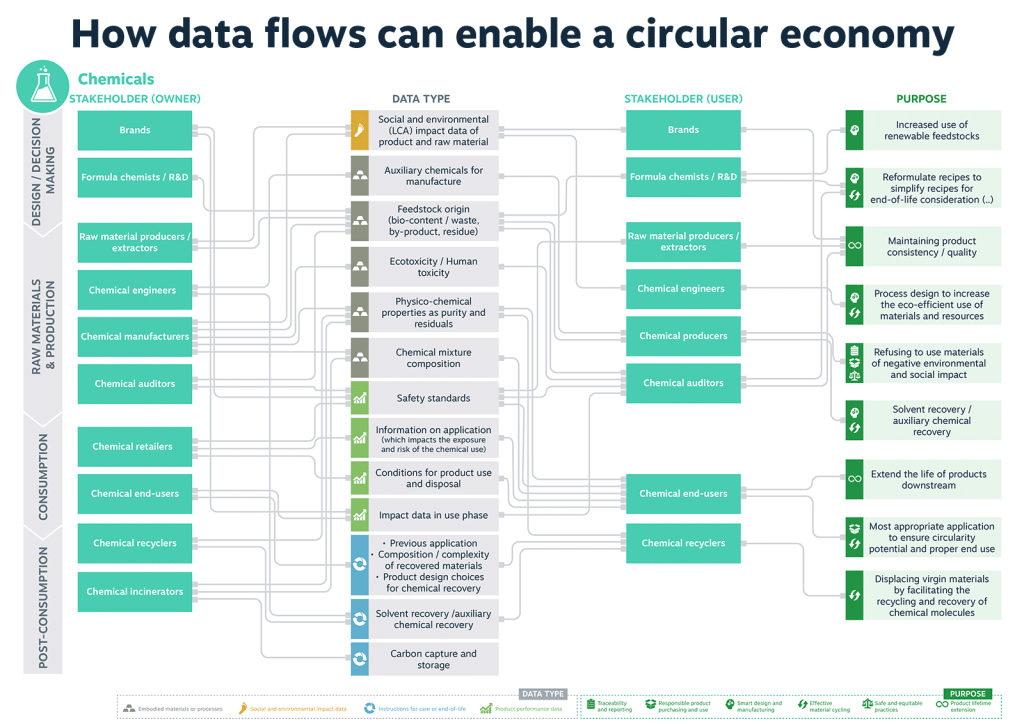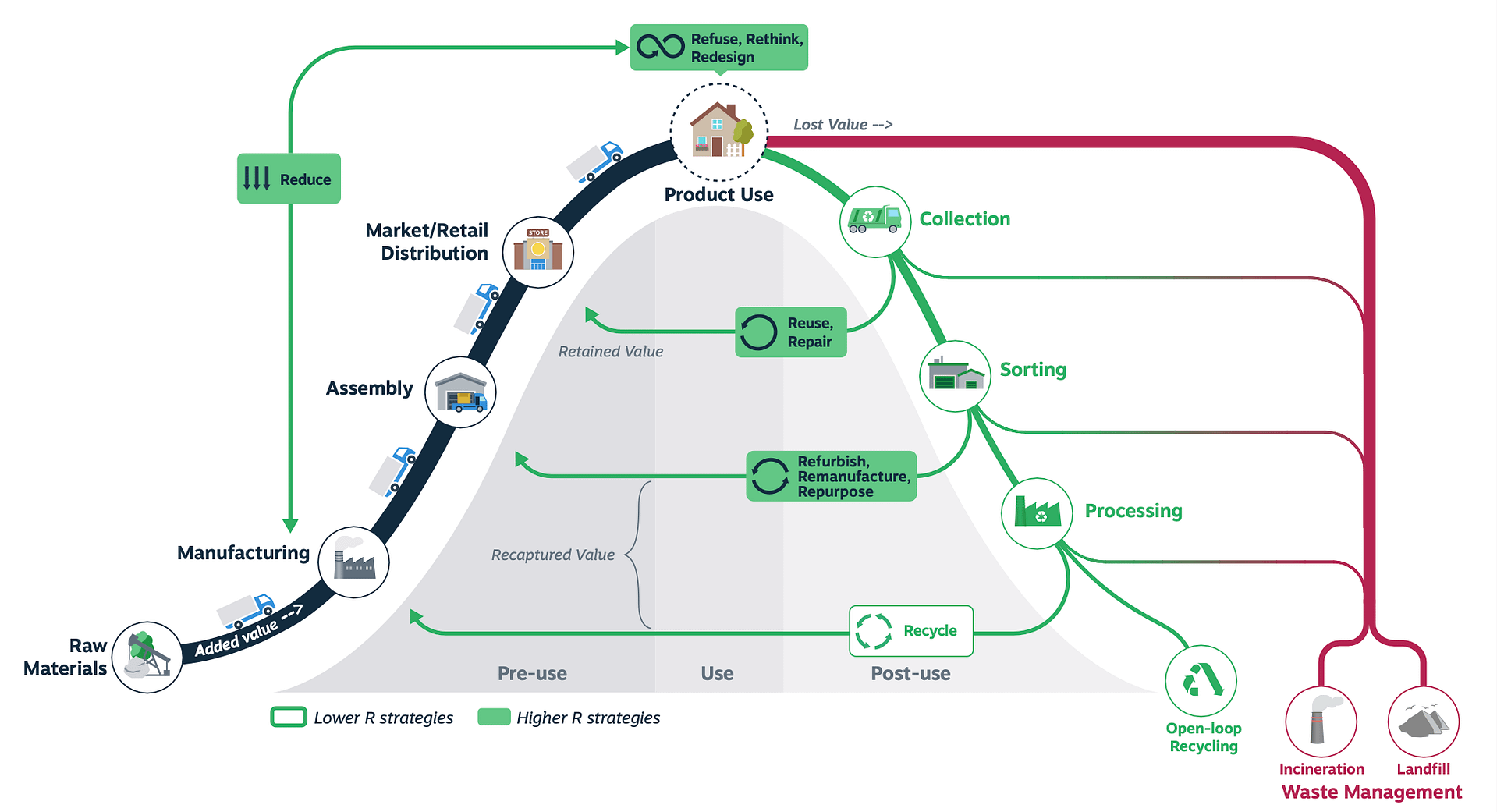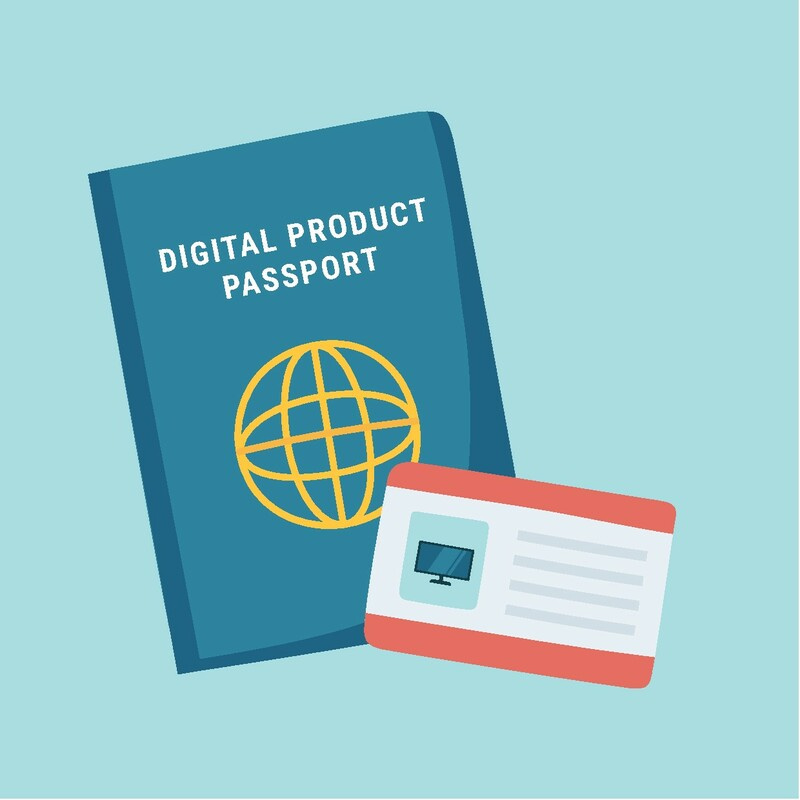Some of the biggest challenges in transitioning towards a circular economy can be addressed by improving the quality of data and increasing its accessibility. Digital Product Passports have the potential to do both.
We live at the junction where the weight of man-made products is overtaking the total mass of all living matter on Earth. The production extravaganza over the past decades has relied on a material-intensive global economy. Fueled by our consumerism, the abundance of cheap energy, and free-market principles, the price and quality of products nose-dived. Repairing products costs more than buying new ones, resulting in shorter product lifetimes. This increasingly short-lived value proposition is taking center stage in the discussion of our throwaway society.
It is in this context that the European Commission (EC) has announced it will implement a Digital Product Passport (DPP). This data carrier holds product-specific information that can be electronically accessed by stakeholders across the supply chain, including end-of-life actors, authorities, and consumers. It is a regulatory instrument that aims to enable circularity within existing product systems.
Up until now, the lack of high-quality and accessible data has been among the most limiting factors in the transition to the circular economy. Digital Product Passports hold the promise to overcome that.
But much work lies ahead before DPPs can transform our economy.
In new research, Metabolic and the WBCSD (World Business Council for Sustainable Development) explore practical examples of what could be included in DPPs. We highlight data flows that could be utilized to enable a circular economy across four sectors. Our interactive sector maps allow users to navigate value chains, linking actors with the different types of data flows necessary to catalyze more circular business.

As European Commission legislators and sustainability pioneers pave the way for a circular future, the implementation of DPPs emerges as an opportunity rather than a challenge. Based on our research, we suggest ways to ensure that the launch of this tool is successful.
Let’s first explore some background, including R-strategies, before reviewing our proposed strategy.
From a linear to circular economy
Transitioning from the linear economic model of take-make-waste to a circular model requires us to rethink the economic inflows and outflows. Inflows are the raw (non-renewable) materials extracted from our environment. Outflows are the discarded products and materials that have lost their economic value, also known as waste.
Theoretically, the demand for virgin materials should be replaced by the wasted output flows. This implies that we need to improve our ability to retain the economic value of both our products and their embodied materials. This is best illustrated by the value hill that incorporates the full hierarchy of R-strategies.

How to transition: R-strategies
On the outflow side, after the (initial) use phase, products should ideally be kept at their intended functional value through re-use, repair, refurbishment, or remanufacturing. When this is no longer possible, the embodied materials should be repurposed or recycled to replace virgin materials in production processes.
The higher-level R-strategies apply to the use and pre-use phases of a product life cycle. By refusing to go along with the consumerist trend, consumers can reduce the total demand for products and materials. Reducing demand can also be achieved by rethinking the business model through which the value of a product is fulfilled by the consumer, like shared ownership or product-as-a-service. Some of the biggest gains can be achieved in the design phase, incorporating the end-of-use circular potential by choosing single material components and redesigning products for easy disassembly.
(Read more in our article: An Overview of the Circular Economy and Its Strategies for Startups and Entrepreneurs)
Shifting from a linear to a circular model creates new dependencies in product systems. Organizations that were previously only downstream of a company’s own operation could now also become its suppliers. The full potential of most R-strategies is therefore only achieved through collaboration across value chains.
What is the key to this? The sharing of data.
Opportunities of sharing product data
Wasteful outflows have spurred new businesses to start. Collectors, sorters, repairers, and remanufacturers now find themselves processing discarded clothes, electronics, and household equipment. Most discarded products need to be checked manually to assess which R-strategy can be applied. Is an item still functional? Does it need a repair? Can it be fixed? Are the components reusable? In this decision tree, each of these steps has follow-up questions. This labor-intensive work comes with much uncertainty to the facilitating organization.
- A product generally functions as long as its shortest-lived component. The digital product passport could provide sorters insights on the most likely faults of a product and how to restore its function best.
- When product designers have access to material characteristics in terms of impact values, recyclability, and recyclable content, they can make conscious decisions to design less impactful products that are inherently easier to keep in the loop.
- Product passports also contain instructions on how to maintain and repair items. This provides consumers with the information required to maximize the product’s lifetime, restoring the balance between repair and buying new.
These are not trivial examples. On the individual product level, this could mean it will take two lifetimes before it is discarded. But on the system level, this translates to less waste being produced and less demand for new products. Moreover, these insights take away much of the uncertainty in business models focused on closing loops, lowering the boundary to invest.

Currently, these simple bits of information are withheld from widespread accessibility, often under the pretense of competitive advantage. With the right tools, like the mandatory implementation of what is promised for the Digital Product Passport, these barriers can be broken. This creates the potential for reshaping industries and revolutionizing the way we approach circularity.
Metabolic’s blueprint for effective implementation
With so many players involved in value chains, this is not an easy process. Besides the technical challenges of implementing DPPs, it will require a well-organized governance structure. These challenges do not outweigh the urgency of our global predicament. Moreover, with the right implementation strategy, DPPs offer opportunities beyond their facilitation of the circular economy.
To capitalize on this potential, we present a strategy based on these principles:
1. Leverage existing efforts. Organizations facing environmental reporting burdens can find relief in the DPP’s streamlined reporting operations. The DPP centralizes data and fosters standardization, reducing the reporting burden for upstream entities in value chains.
2. Start simple and iterate. A gradual approach to data requirements ensures practicality and feasibility. Getting started with readily available data points allows stakeholders to adapt their processes and digital infrastructure, setting the stage for ongoing refinements.
3. Formalize standards. The DPP’s effectiveness relies on standardized definitions, calculation methods, and data formats for each captured data point. Standardization enhances data consistency, compatibility, and utilization.
4. Ensure data security, accessibility, and compatibility. Collaborating closely with industry stakeholders is paramount in developing technical requirements for a decentralized DPP implementation. Security protocols and accessibility considerations are essential to safeguarding data confidentiality.
5. Embrace technological complexity. The technical infrastructure of the DPP introduces complexities that necessitate careful consideration. Collaboration between regulators and industry experts is essential in formulating protocols and measures that ensure data security, privacy, and compatibility.
We have a well-established vision for how to achieve a circular economy. Digital Product Passports have a vital role in facilitating this transition.
We challenge organizations across product systems to embrace the opportunities of DPPs. How can data-facilitated circularity contribute to the resilience of your own supply chains and business models?




